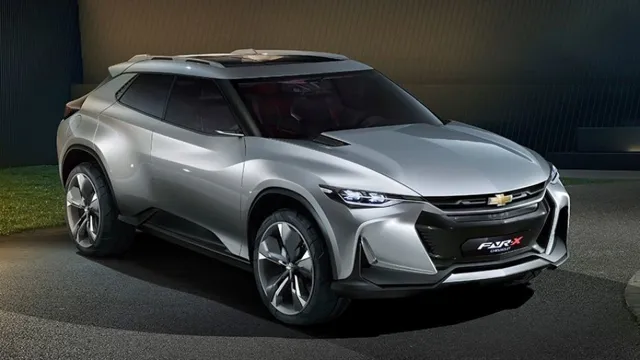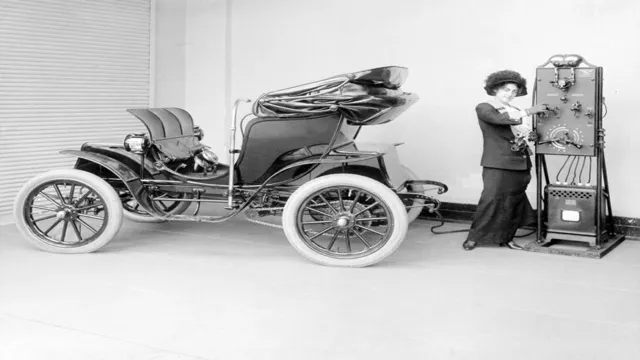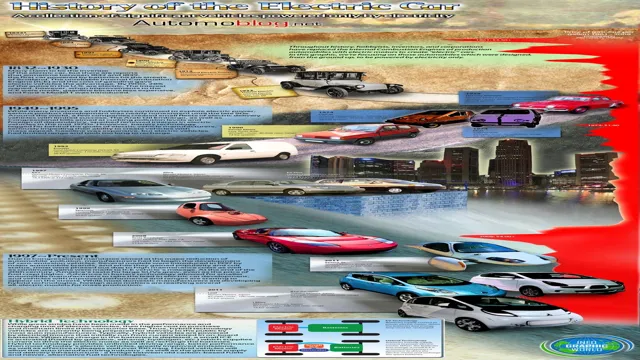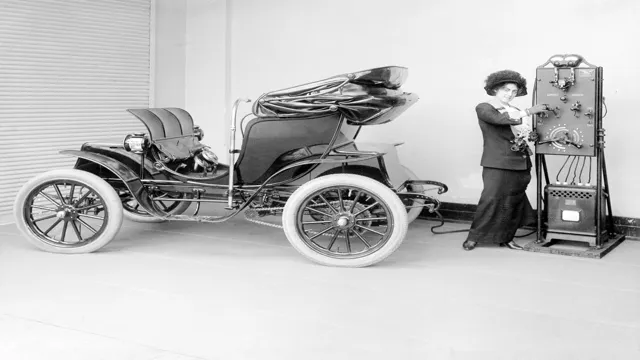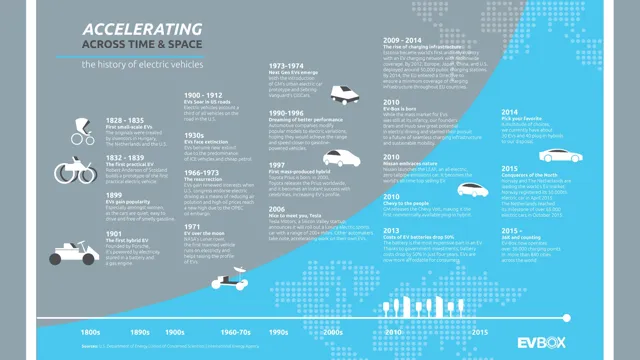Revolutionizing the Roads: A Comprehensive History of General Motors’ Electric Cars
Are you looking to learn about the history of General Motors’ electric cars? Look no further! From the early days of the EV1 to the modern day Chevy Bolt, GM has been at the forefront of electric vehicle technology. Despite challenges and setbacks, the company has continued to innovate and push the boundaries of what is possible with battery-powered cars. So grab a cup of coffee, settle in, and let’s take a trip through the history of General Motors’ electric cars.
We’ll explore everything from the company’s early experiments with EVs to its current offerings and beyond. By the end of this post, you’ll have a deeper understanding of the role GM has played in shaping the electric car industry.
Early Days of Electric Cars
General Motors has been around since the early days of electric cars. In fact, they had an electric car on the market in 1996 called the EV This was a big deal at the time, as it was one of the first major automakers to produce a fully electric vehicle.
However, the EV1 was not without controversy. Despite rave reviews from drivers, GM discontinued production after just a few years, citing low demand and high production costs. Many critics have speculated that pressure from the oil industry played a role in this decision.
Regardless, the EV1 remains an important part of general motors electric car history and one of the early pioneers in the electric vehicle market. Today, GM is back in the game with several electric models, including the Chevy Bolt and Cadillac Lyriq, and a commitment to an all-electric future.
1912 Cadillac Electric
Electric cars have been around for over a century now, and one of the earliest examples of an electric car is the 1912 Cadillac Electric. This vehicle was considered a luxury car at the time, and it was marketed towards affluent individuals who wanted a cleaner, quieter mode of transportation. The 1912 Cadillac Electric had a top speed of around 20 miles per hour and could travel up to 80 miles on a single charge.
This was an impressive feat considering the limited technology available at the time. However, these early electric cars had their limitations, and one of the biggest drawbacks was the lack of charging infrastructure. There were only a few places where you could charge your electric car, and this made them impractical for long-distance travel.
Despite the limitations, the 1912 Cadillac Electric was a groundbreaking vehicle that paved the way for the modern electric cars we have today.
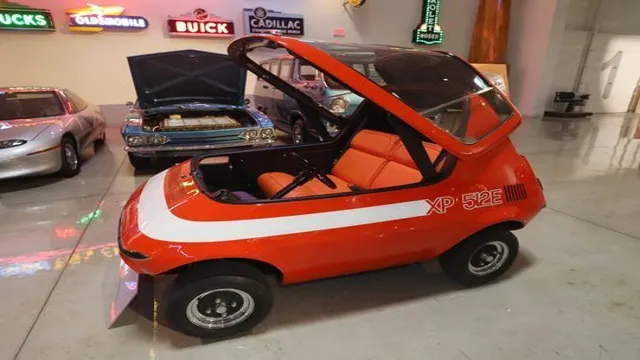
Impact of Gasoline on Electric Cars
Electric cars have been around since the 19th century, but gasoline-powered cars dominated the market due to their longer range and faster speeds. It wasn’t until the 1990s that electric cars started to make a comeback with better battery technology and increased environmental concerns. However, the impact of gasoline on electric cars is still a topic of discussion.
While electric cars offer a cleaner and more sustainable alternative to gasoline-powered cars, the infrastructure and technology to support them are still in its infancy. The number of electric charging stations is limited compared to the number of gas stations, and charging times can be much longer than refueling a gasoline car. Nevertheless, with the rapid advancement in battery technology and the increasing demand for electric vehicles, the future looks bright for electric cars, and their impact on the environment and the transportation industry remains a significant conversation.
Electric Renaissance
General Motors has been at the forefront of the electric car movement for decades, with its first fully electric car, the EV1, introduced in the late 1990s. Despite early success and a cult following, the EV1 was discontinued in 2003 due to a lack of demand and support from the company. However, GM continued developing electric powertrains and is now positioning itself as a leader in the electric vehicle market with the Chevy Bolt and upcoming models such as the Cadillac Lyriq and Hummer EV.
The history of GM’s electric car development shows both a commitment to innovation and the challenges faced by the industry in gaining widespread adoption. As electric vehicles become more mainstream, GM’s legacy of electric car innovation will continue to shape the industry.
EV1 and the California Air Resources Board Mandate
When people look back on the history of electric cars, one name stands out: the GM EV This vehicle was a pioneer of the electric renaissance, which has brought us exciting new cars like the Tesla Model S. But it was also a product of necessity, brought forth by the California Air Resources Board mandate.
This mandate required that a percentage of vehicles sold in California be zero-emission vehicles, in an effort to reduce pollution and improve air quality. GM responded by creating the EV1, which was a revolutionary vehicle for its time. Unfortunately, the program was canceled in 2003, and all of the EV1s were taken off the road.
Nevertheless, the legacy of the EV1 lives on, inspiring people around the world to embrace a future of clean, sustainable transportation.
Collaboration with China’s SAIC
SAIC, electric cars Exciting news from SAIC Motor and MG Motor UK shows that the electric car revolution is continuing to pick up pace. The two companies have joined forces in a new collaboration, aiming to develop a new electric supercar. This will no doubt be a major step forward in the electrification of the automotive industry.
SAIC Motor is one of the leading car manufacturers in China, with a rich history of innovation and development. This collaboration with MG Motor UK is a key part of SAIC’s push into the fast-growing electric car market. With the UK government’s new regulations on emissions making electric vehicles a top priority, this partnership is expected to bring about a new era in car design and performance.
The results of this collaboration are eagerly awaited by both the automotive world and the wider public. The electric renaissance is truly here, and the SAIC-MG collaboration is just one of the many exciting developments in this rapidly-evolving field.
Launch of Chevrolet Volt and Bolt
Chevrolet’s launch of their environmentally friendly electric vehicles, the Volt and Bolt, is marking a new era in the modern automotive industry. The electric renaissance is upon us and it’s making waves in the automobile industry. The Volt and Bolt are not only fuel-efficient and eco-friendly, but they’re also stylish and cutting-edge.
It’s an exciting time for car manufacturers and consumers alike. Finally, we can work towards a cleaner, more sustainable future without sacrificing style or comfort. The Bolt, Chevrolet’s all-electric vehicle, is a game-changer on its own.
It’s affordable for the average consumer and has a range of up to 259 miles per charge. That means long road trips, commutes, and errands won’t be limited by range anxiety any longer. The Volt is a plug-in hybrid that offers up to 53 miles on electricity before switching over to its gas-powered engine for extended range.
This revolutionary technological advancement is just the beginning of a new chapter in the automotive industry.
Future of General Motors Electric Cars
General Motors has a long history in the development of electric cars, dating back to the 1990s when they introduced the GM EV However, the company faced setbacks and eventually discontinued the project. Nowadays, GM is committed to a future of electric cars, investing heavily in their Ultium battery technology, which promises improved range and performance.
The company plans to release 30 new electric car models by 2025, including the highly anticipated Cadillac Lyriq, a luxury SUV with a range of over 300 miles on a single charge. GM has also partnered with Nikola to develop hydrogen fuel cell technology for long-haul trucking, signaling their commitment to sustainable transportation. With their bold plans and strong investment in electric technology, General Motors is poised to make a significant impact in the future of automotive engineering.
New Battery Technologies
New Battery Technologies, General Motors Electric Cars As we move towards the future, it’s time for a paradigm shift towards electric vehicles. General Motors, as a leading automaker, has taken steps to ensure its customers embrace this shift by investing heavily in the development of new battery technologies. GM believes that the future of electric cars lies in advanced battery technologies, and it has set its sights on creating a battery that can power EVs for up to 400 miles on a single charge.
A potential breakthrough in this regard is the use of solid-state batteries which can deliver more power and higher energy density while weighing less. This technology is not yet available on the market, but General Motors has made it clear that it is exploring the possibility of implementing it in its future electric vehicles. With such advancements in battery technology, the future of electric vehicles may just become brighter, and General Motors is at the forefront of this revolution.
Partnerships with Honda and Nikola Corporation
General Motors (GM), one of the largest car manufacturers, is making big moves towards electric vehicles. They announced two significant partnerships that are set to accelerate their transition to electric cars. Firstly, they’re partnering with Honda to develop EVs using GM’s advanced Ultium battery technology.
This collaboration will help both companies in reducing battery costs and developing technical advancements in their EVs. Secondly, GM is partnering with Nikola Corporation to engineer and manufacture the Nikola Badger, an electric pickup truck. The partnership aims to create the most advanced zero-emission pickup truck, combining GM’s Ultium batteries and Hydrotec fuel cell systems with Nikola’s technology.
These partnerships will help GM to become a leader in electric vehicles and create a greener future for all.
Conclusion: General Motors’ Electric Car Legacy
In conclusion, General Motors’ electric car history has been a rollercoaster ride full of ups and downs, successes and failures. From the innovative EV1 to the lackluster Spark EV, GM has always been one step behind the competition. However, with the recent release of the Chevy Bolt, General Motors has proved that they can hold their own in the electric car game.
Hopefully, this latest addition to their electric fleet will kickstart a new era of success for GM in the world of EVs. As the old saying goes, “it’s not where you start, it’s where you finish,” and General Motors seems poised to finish strong in the electric car market.
FAQs
When did General Motors launch its first electric car?
General Motors launched its first electric car, the EV1, in 1996.
What was the range of the EV1?
The EV1 had an initial range of around 80 miles on a single charge.
Why did General Motors discontinue the EV1?
Despite initial popularity, General Motors discontinued the EV1 in 2003 due to low sales and high production costs.
What electric car did General Motors release after the EV1?
After discontinuing the EV1, General Motors released the Chevrolet Volt in 2010, a plug-in hybrid electric vehicle.
What is General Motors’ current electric car offering?
General Motors’ current electric car offering is the Chevrolet Bolt, a fully-electric vehicle with a range of approximately 238 miles on a single charge.
